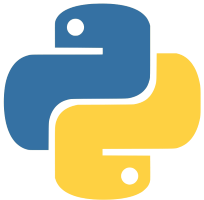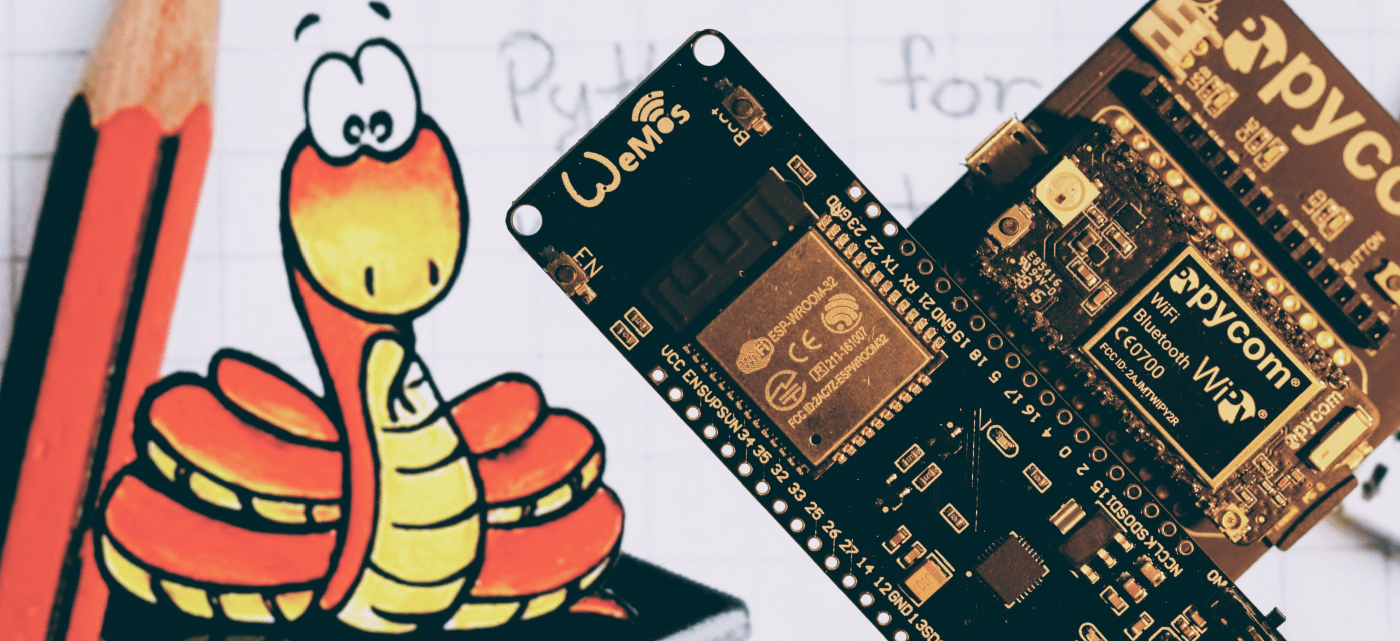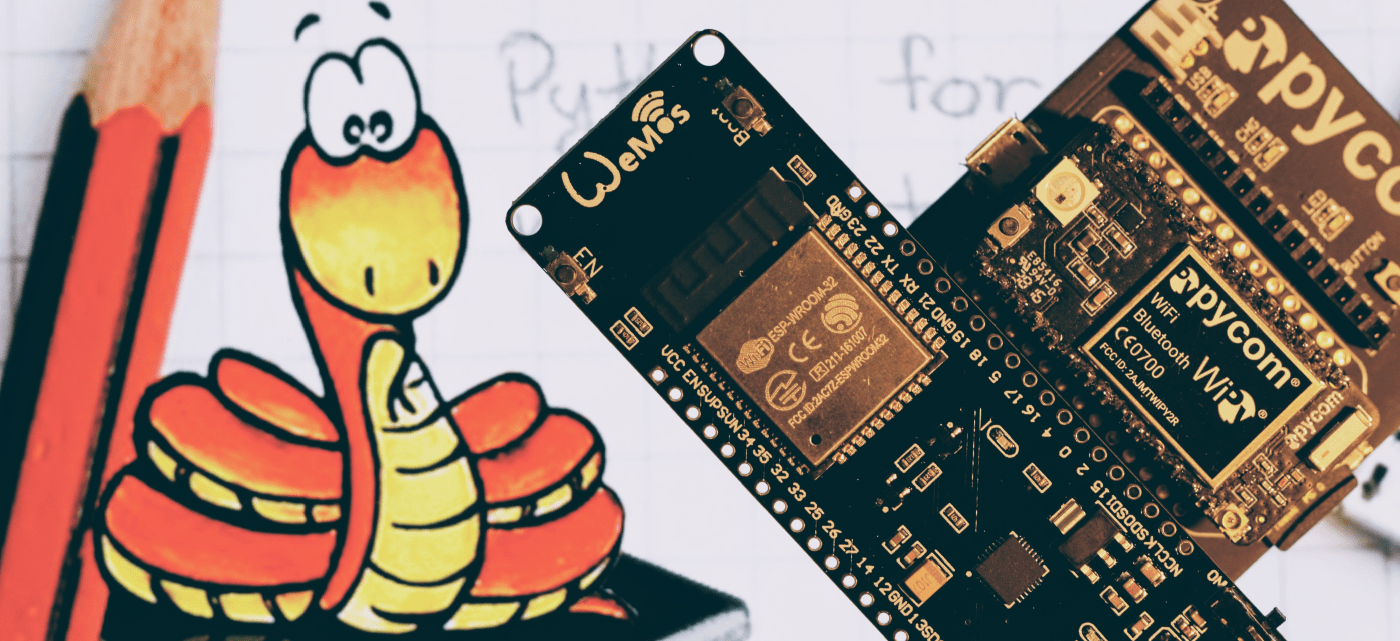Tag: micropython
- 31
Dec - 2018MicroPython
1 min | 1417Out with the old, in with the new! Happy 2019!
It's been a two years now since I started this blog. It's a hard job to maintain it up-to-date but I still have fun writing and coding for this purpose! I hope the next year will be better than this one! :)
This post includes a new video for happy new year! The video combines some of the MicroPython code, that I've published this year. I'll be uploading the repo to GitHub in the next days. But, in the meantime enjoy the video, and check the MicroPython projects here!
- 27
Dec - 2018MicroPython
3 min | 127219Quoting the official MicroPython's website:
MicroPython is a lean and efficient implementation of the Python 3 programming language that includes a small subset of the Python standard library and is optimised to run on microcontrollers and in constrained environments.
Besides C++ and C, I use MicroPython to program microcontrollers, especially the ESP32/ESP8266 types. These two microcontrollers are compatible with MicroPython and it is easy to integrate sensors and actors programming using this language. I wrote a tutorial about installing MicroPython on the ESPs, as well a lot of articles a...
- 24
Dec - 2018MicroPython
1 min | 1285LeMaRiva|tech wishes you a Merry Christmas and a Happy New Year! To celebrate I made a video using the Xmas-lights from last year, but this time I connected the ESP32 to a Jupyter kernel to control the lights. A new Jupyter-ESP32 tutorial is coming soon. In the meantime, you can track Santa and spend time with your family!
![Python]()
Code: https://github.com/lemariva/Xmas-lights - 27
Oct - 2018Cloud Platforms, Home Automation, MicroPython
2 min | 8816#Zerynth: ESP32 & Google IoT Core - Part 2: Getting data from Smart Power Outlets
Cloud Platforms, Home Automation, MicroPython | 2 min | 8816
This part 2 of the tutorial will allow you to get data from the smart power outlets and send it to the Google Cloud Platform (GCP) throught the Google IoT Core and using an ESP32 programmed with Zerynth (Python). This data is not usually available to the user (directly, you need to use the power outlet application), and it is sent to the company servers.
If you want to check, if your power outlets are compatible for this tutorial, they should have the...
- 22
Oct - 2018Home Automation, MicroPython
5 min | 29210#MicroPython: Controlling Smart Power Outlets using an ESP32
Home Automation, MicroPython | 5 min | 29210
Today there is a wide range of offer for home automation devices. A lot of sensors, actors etc. can be connected to the cloud and be controlled using Google Home, Amazon Alexa, your smartphone, etc. There are a lot of companies offering low cost devices, e.g. Sonoff, Tuya, Teckin etc. Most of these solutions are based on ESP32 or ESP8266, and all of them send data to cloud solutions usually deployed on Amazon services, and the data is only accessible using the Androi...
- 06
Oct - 2018LoRa/LoRaWAN, MicroPython
3 min | 46036LoRa (Long Range) is a patented digital wireless data communication technology. It was developed by Cycleo of Grenoble in France and then acquired by Semtech in 2012. Semtech defines the Lora Technology "as the DNA of IoT, which connects sensors to the Cloud and enables real-time communication of data and analytics that can be utilized to enhance efficiency and productivity".
To sum up, LoRa is a wireless data communication technology that enables very-long-range transmissions (mo...
- 17
Sep - 2018Cloud Platforms, MicroPython
7 min | 28479#Zerynth: ESP32 & Google IoT Core - Part 1: Sending data to the Cloud
Cloud Platforms, MicroPython | 7 min | 28479
There are lot of tutorials about connecting the ESP32 to a cloud service, but I planned to connect these boards using MicroPython directly to the cloud. That means, I didn't want to use a hardware or software bridge. I wanted to use the Google IoT Core, but MicroPython doesn't support JSON Web Token (JWT), which is needed for the device authentication. I tried to write the library myself, but it didn't work, because of the needed dependencies and the small mem...
- 16
Jun - 2018MicroPython
2 min | 6322To continue the series of posts "connecting sensors to MicroPython", this article is about the MPU6050 (you can use also the MPU9255, I am still waiting for the Chinese sensor package) and the WiPy 3.0. Combining the IMU sensor with the WiPy and two micro servos 9g, it is possible to stabilize a camera (tilt/rotate).
To calculate the compensation needed for the stabilisation, I added the
umatrix,quaternionandulinalglibraries to the project to make matrix multiplication and ... - 03
Jun - 2018MicroPython
4 min | 36441One of the most visited articles on my blog is the Getting started with MicroPython! tutorial. If you still don't know what is MicroPython and you want to start programming microcontroller boards (ESP32, ESP8266 etc.) using a small version of Python 3, you should look at that article . Don't expect to use machine learning or/and other big libraries (the available RAM and microcontroller performance is far away for that aim), but you can do some projects like these:
- 02
Mar - 2018MicroPython
1 min | 10990While I was reading my getting stated tutorial about MicroPython again, I noticed that I've forgotten to tell something about dependencies or packages.
Here is possible to find some MicroPython packages. On the WeMos (ESP32) or the ESP8266, it is possible to install these packages using the
upippackage manager. The WiPy doesn't have the package.To download the new packages, you need to connect the board to the Internet. I take the WeMos as example and typing the following, you can connect the board to your WiFi router:
ssid_ = <your_ssid> wp2_pass = <your wpa2 password> import network sta_...
We use cookies to improve our services. Read more about how we use cookies and how you can refuse them.










